How do I deadhead my plants? And why?
I discussed deadheading last week on The Garden Lady and later in the program a caller remarked that it was suddenly clear to her how, and why, this garden task should be done. This listener isn’t alone in wondering why the removal of wilted flowers is important. So I thought it important to talk about it again here.
Here are the reasons to deadhead plants, and some photos that illustrate how and why.
1. Removing the old flowers often stimulates the plant to bloom more. Yay! This is because it is every plant’s mission to push its genetics into the future, and the main way plants do this is by making seeds. The flowers are the way the plant attracts pollinators, but once seeds are formed the plant figures that its job is done, and no more pollinator bait is needed. But if we clip off the seeds as they start to develop, the plant has to produce more flowers in order to fulfill its mission. Not all plants will respond to deadheading by flowering more, but many do. The key piece of information here is to clip the growing seeds off below the swollen area under the wilted petals – removing the dying flower petals alone won’t stimulate more bloom if the seeds are left in place.

Deadheading means cutting off the dried, dying or dead flowers once they have wilted and no longer look good. This Diva lacecap was in bloom for over a month, but now the flowers aren’t as attractive and I can clip the stem off just below the bloom.
Sometimes deadheading can revive a plant that’s stopped flowering because of summer heat or inconsistent watering.
2. Clipping off dead or drying flowers improves the look of the plant. Once old flowers are gone the garden looks better. In some cases, like the hydrangea pictured above, just clipping off the spent bloom directly underneath it is perfect. In other cases, like daylilies, you need to remove the stem that supported those flowers too. Just plucking off the flowers on a daylily or geranium stem, for example, leaves the bare stem and this isn’t attractive.
3. Removing developing seeds prevents unwanted “volunteers” from showing up in your garden. Sometimes self-seeded volunteers such as foxgloves are welcomed. But let’s face it, there are some plants that are land-grabbers. Give them an inch and they’ll take over your landscape before moving on to conquer the entire neighborhood. I love my Verbascum chaixii, for example, but if I let every plant set seeds that’s all you’d see in my flower beds. Some plants need to have limits set, and deadheading is one way of keeping them under control.
4. Deadheading plants that bloom early in the summer opens up valuable real estate. My Nepeta ‘Walker’s Low’ is lovely though early July, but after that the blue flowers fade to gray and it doesn’t bring much to the party. By cutting off the long stems not only is the look of the garden improved, but the plant is made smaller and I have space to stick in a few more annuals. (Note: I always buy a few extra six packs of annuals and plant them up in 6″ pots in early June so that I have some plants to tuck into the garden later in July. Profusion Zinnias are some of my favorites for this purpose.)
Here are some photos that illustrate what these reasons to deadhead, plus one that shows how you can usually tell the difference between a seed pod and a flower bud.
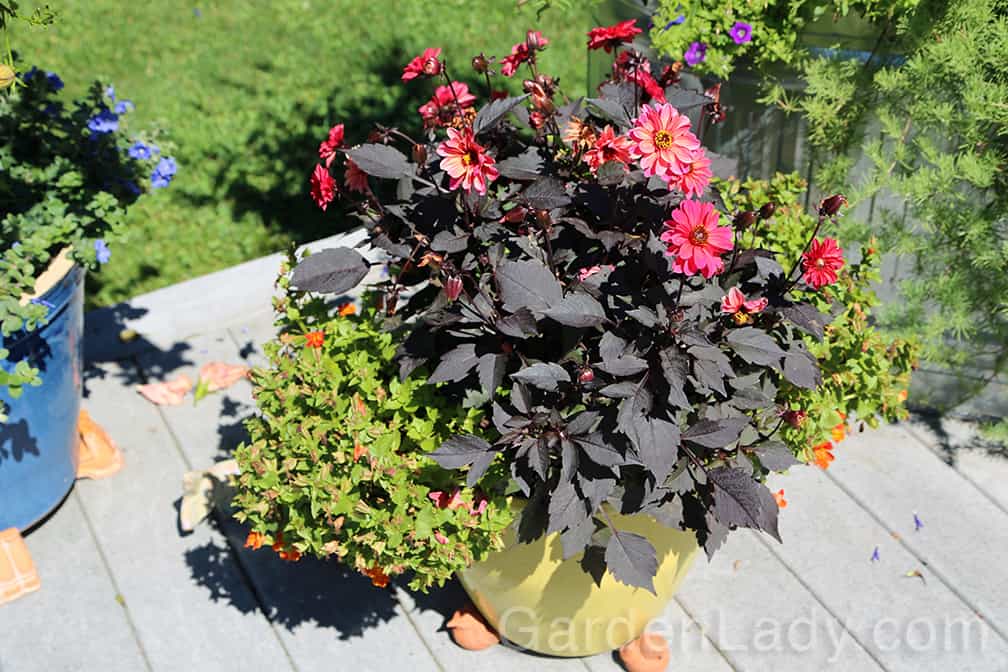
This container was planted with a dark-foliage Dahlia and some orange Torenia plants in early June. In order to keep the dahlia flowering, and to stimulate new booms on the Torenia, deadheading is needed. Often flowers that are fading do just that – the colors fade to a lighter shade. That’s one way to tell which ones you cut off. Newer blooms will be deeper and more vibrant in color.
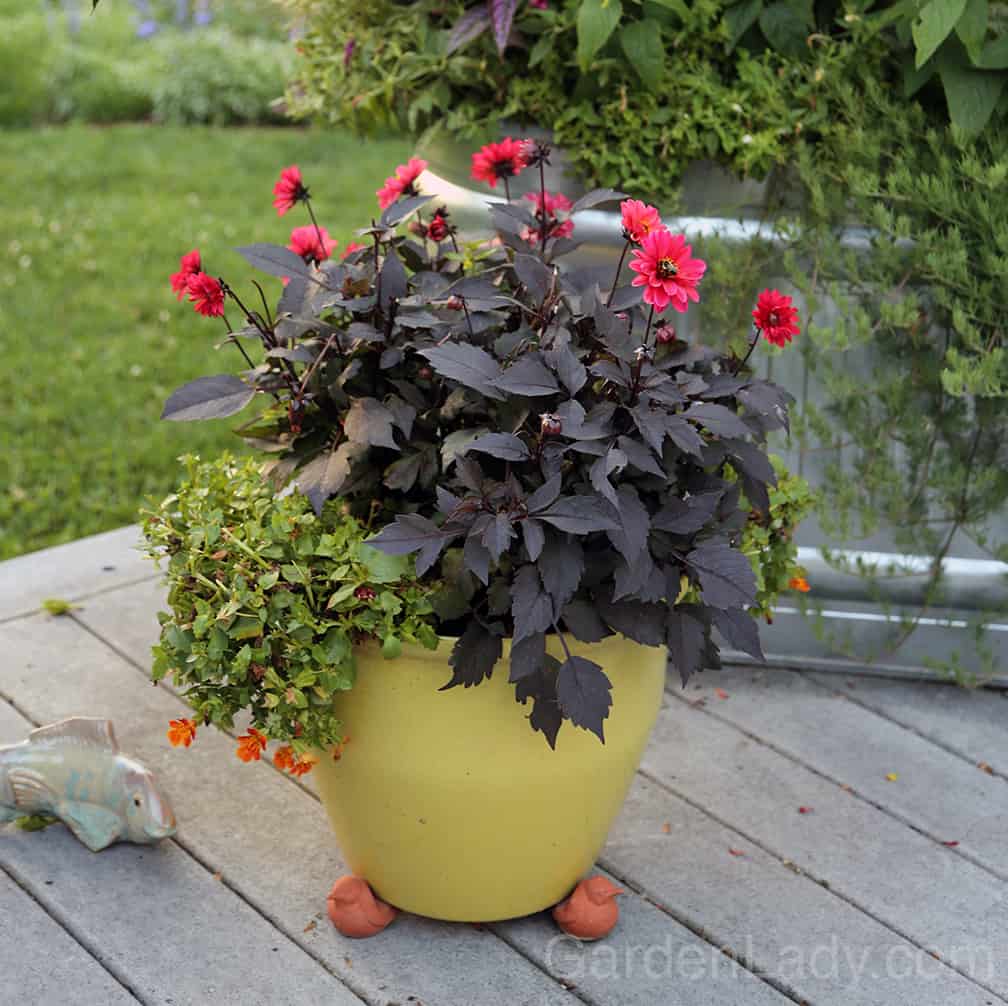
Here is how the pot looked after I removed the fading flowers on the Dahlia and clipped about 2″ off the top of the Torenia. Neater, cleaner, and ready to produce more flowers. After deadheading, water the container well and then give it an application of fertilizer to help stimulate more blooming.
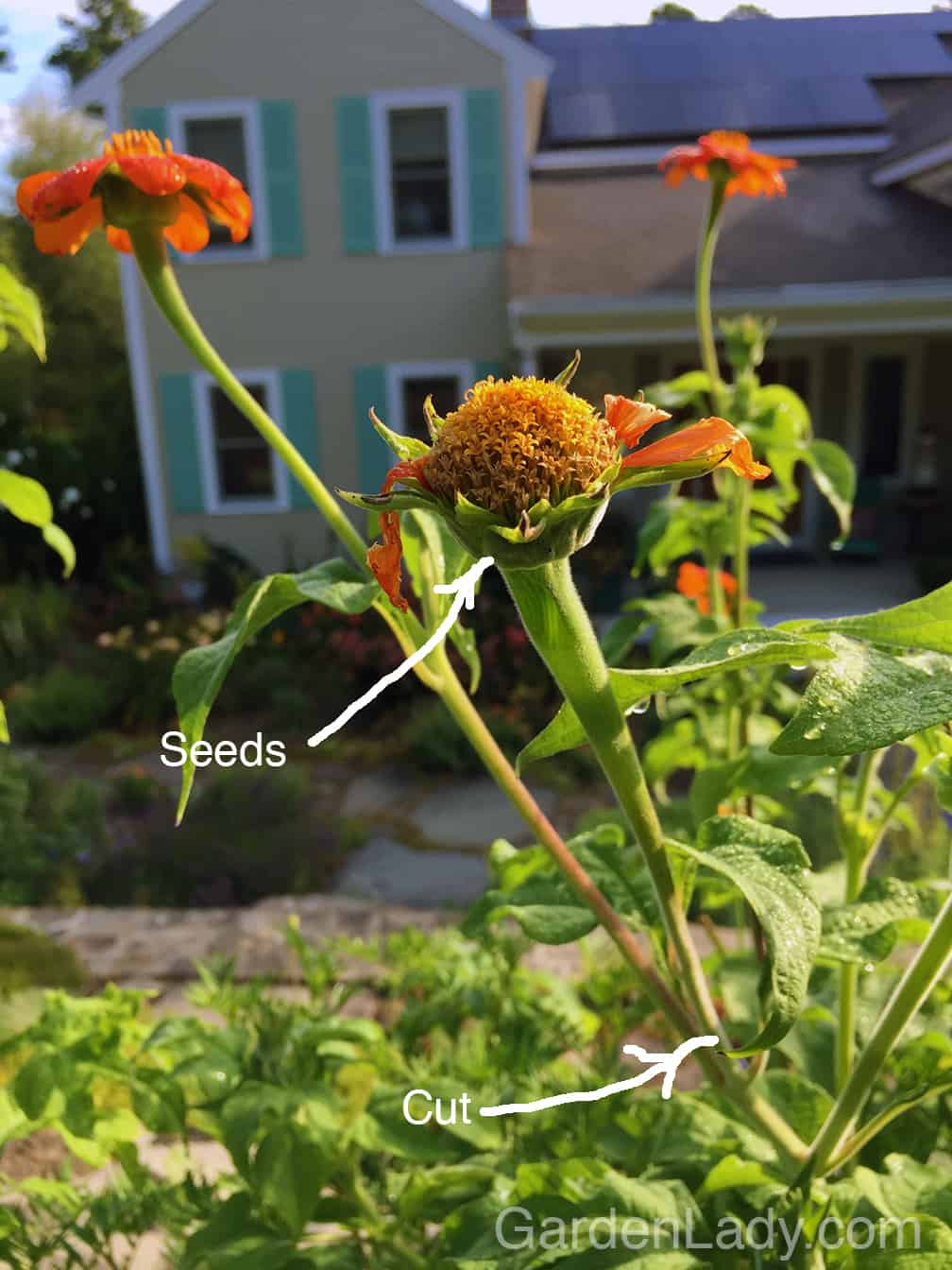
Annuals usually flower more with deadheading. This Mexican sunflower (Tithonia rotundifolia) will branch out and bloom more if old flowers and seeds are removed.
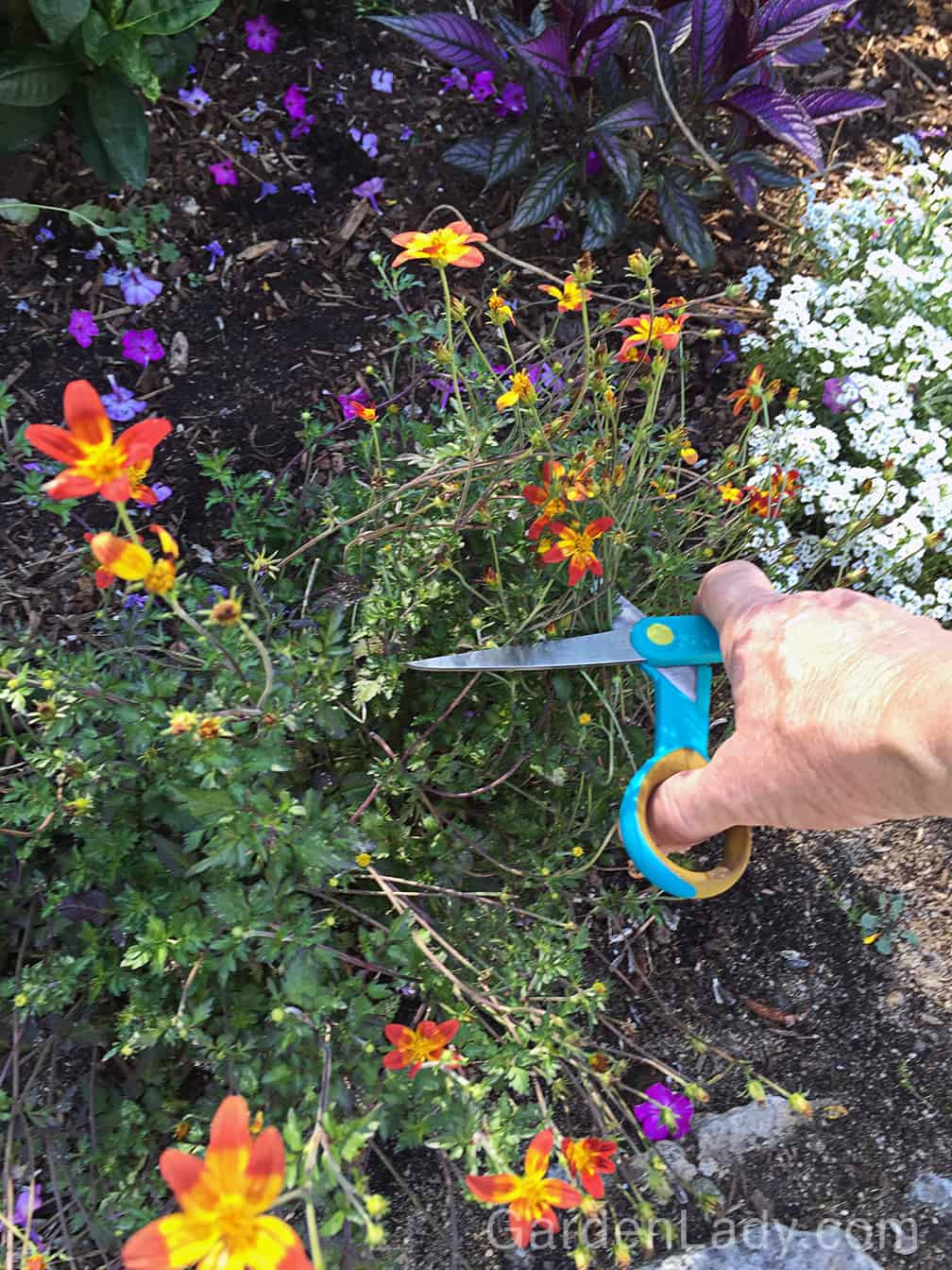
Even plants that don’t require deadheading, like this Bidens Campfire FIreburst, flower better for the rest of the summer if they are given a haircut to cut off spent blooms. This plant slowed its flowering in our hot, dry July weather so a trim, and a good soaking, will help it to rebound.
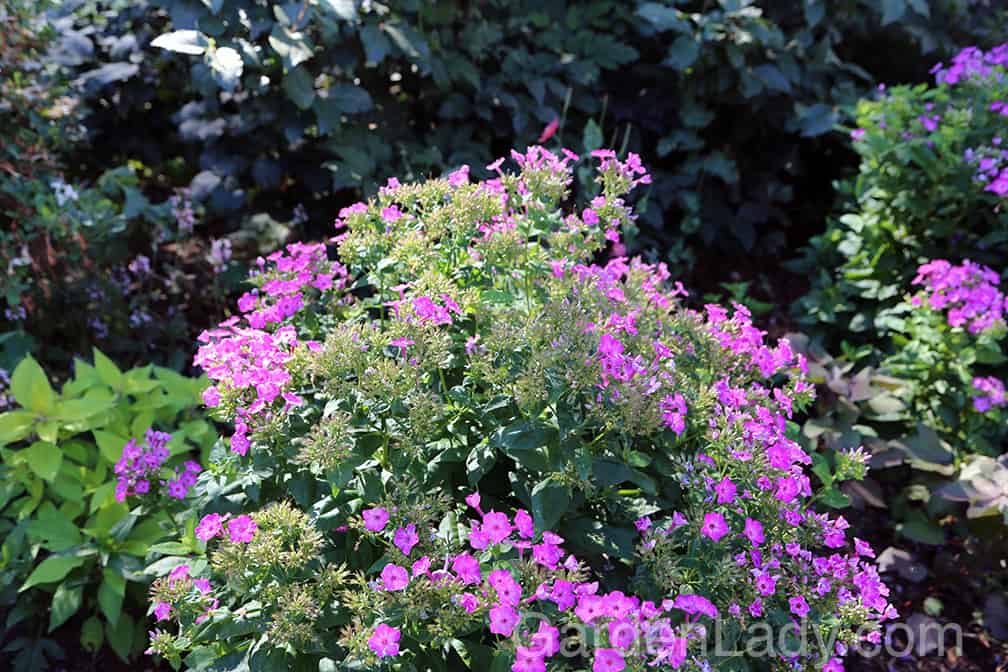
Here is a Volcano Purple Phlox that is just starting to go by. This plant will produce many more huge flower stems (more than most Phlox paniculata!) if the old ones are cut off promptly.
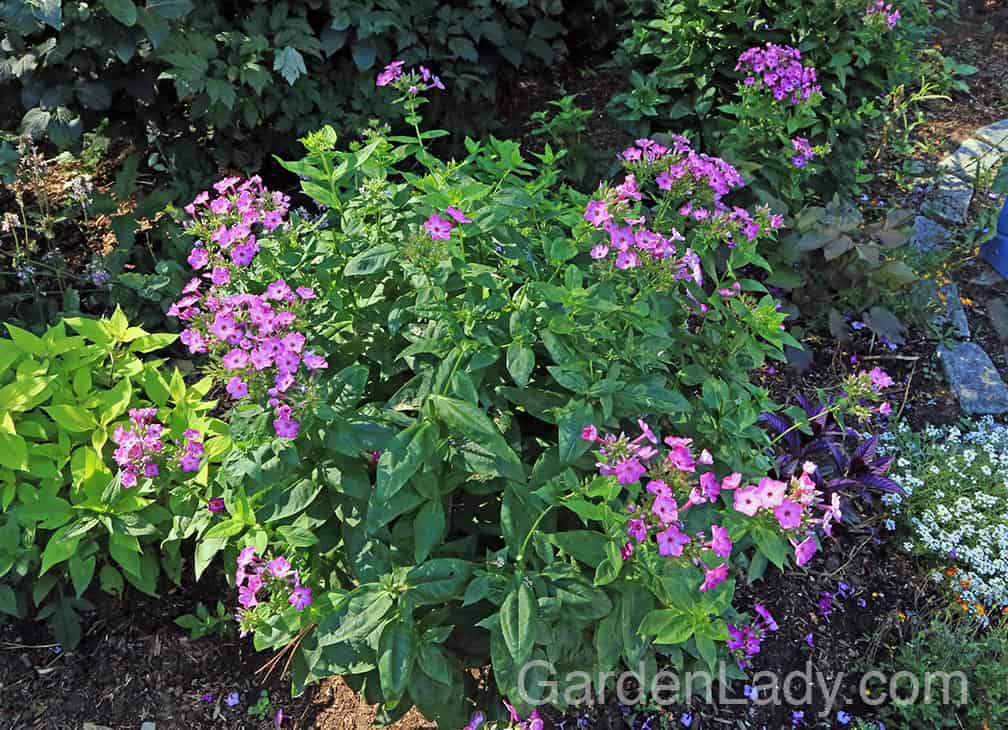
I left the flowers that were still coming out, but next week I’ll go back and clip those off as they fade.
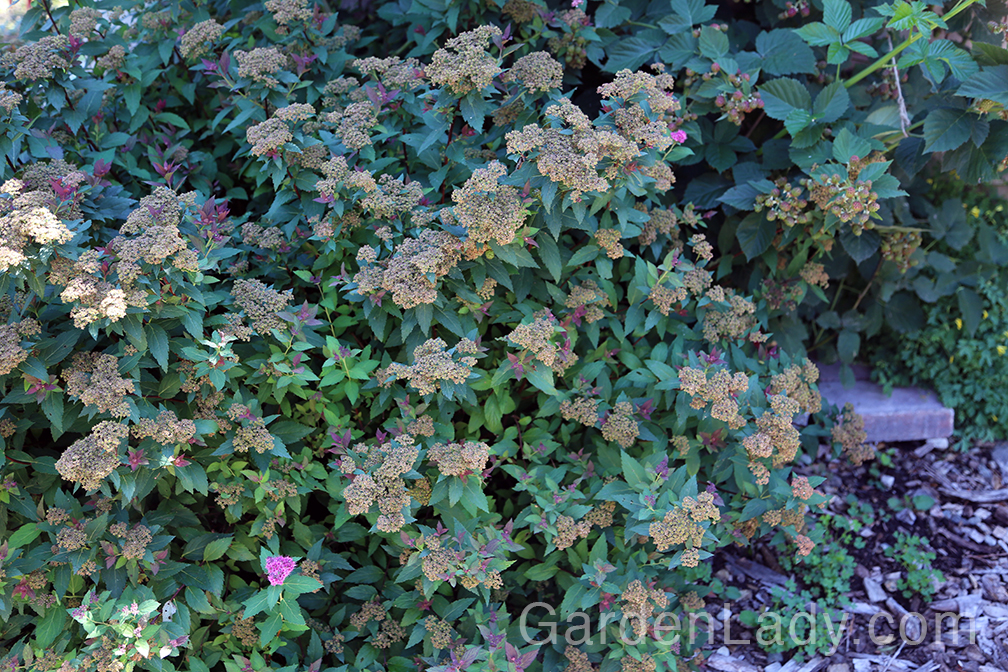
Pink flowering Spireas are improved in appearance and will produce more flowers when deadheaded.

Here is how Double Play Artist looks after the old, gray flowers are removed. Within a couple of weeks this plant will have fresh foliage and it will produce more pink flowers in August. You can see from the clippings in the bucket that I cut off stems about 6″ long when deadheading this plant.
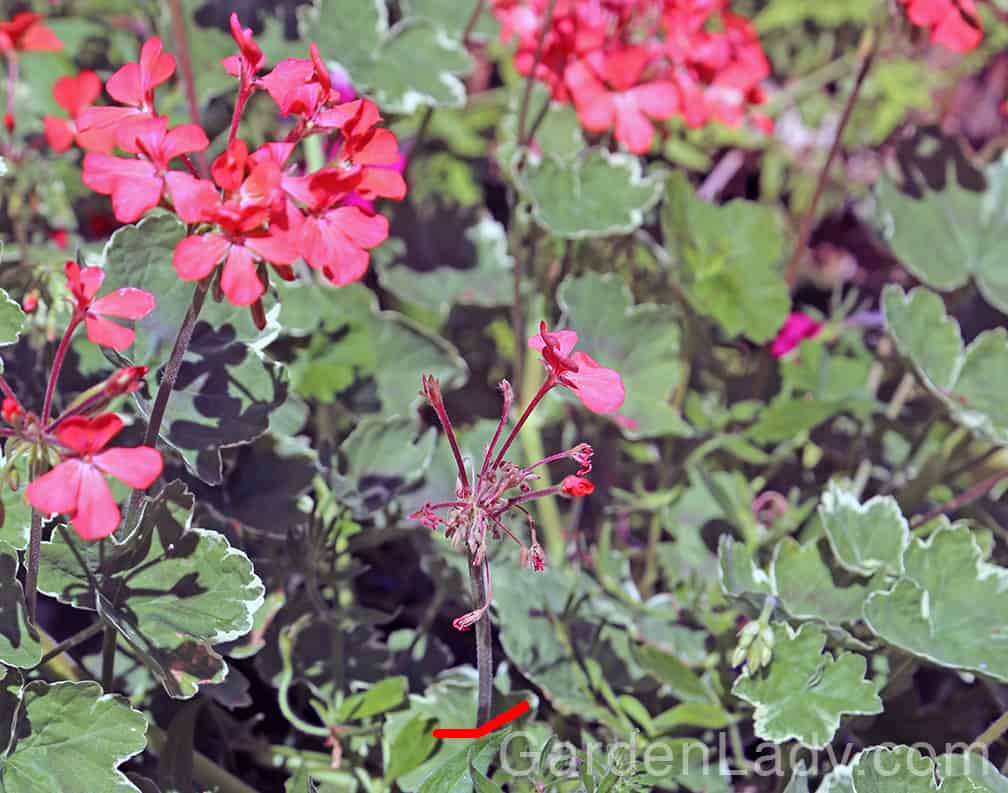
Cut off the stems (see red line) as well as the old flowers on geraniums and daylilies.

Peonies don’t bloom more when deadheaded but the look of the plant is improved when these seeds are cut off. Clip these stems down into the foliage so the cut doesn’t show.

On some plants the seed pods and the buds look similar. Here’s how you can tell the difference. The seed pods are usually a different shape. On this dahlia the seeds are longer and thinner; the three on the left are seed pods, while the rounder three stems on the right are flower buds. On Stella D’Oro daylilies, however, the shape difference is just opposite: the flower buds are thinner and the seeds are rounder. Look at the shape of each plant’s buds as they start to open into flowers, and see what the difference is between those and the seeds for that particular plant.

There’s a myth that roses need to be deadheaded by cutting down to just above a set of 5 leaflets. Don’t believe it! (Get a copy of Coffee for Roses and read all about this and other garden falsehoods.) Clip off spent flowers at any point below the cluster of growing rose seeds. (Rose seed pods are called “hips.”)

Nepeta looks OK as it goes past bloom, but the faded flowers don’t add much and they take up lots of room.
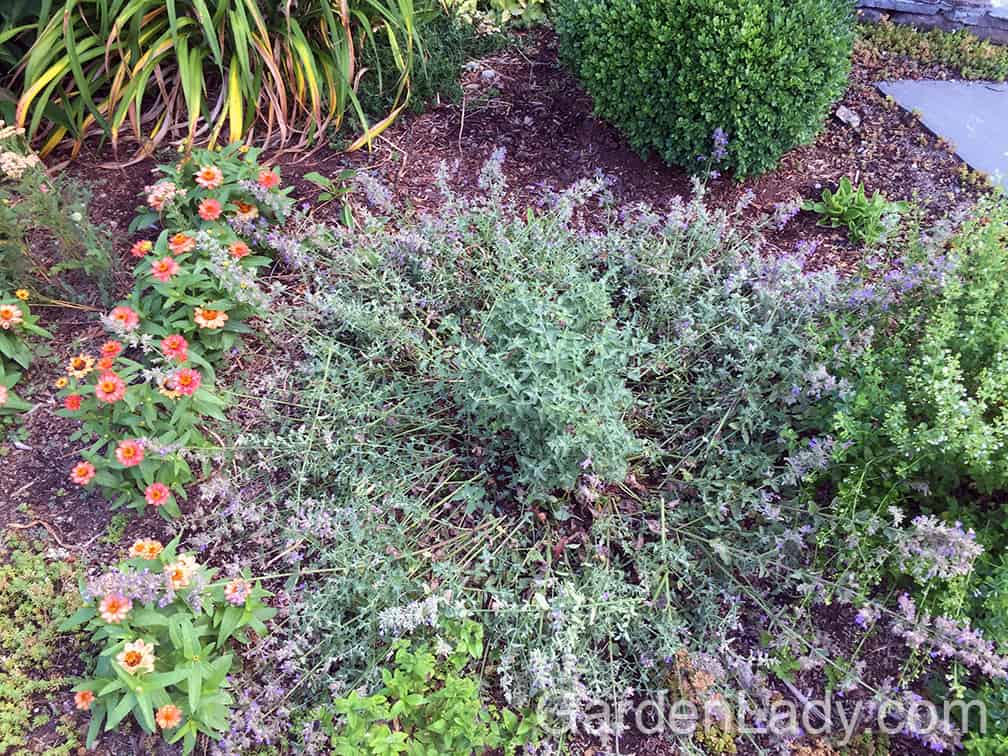
You can either cut the entire plant to the ground (it will make some new, fresh low leaves) or do what I did and clip off the long flower stems, leaving a rounder, smaller plant. The Nepeta will fill out and produce a few new flowers in August, but best of all, removing those long stems creates more space.
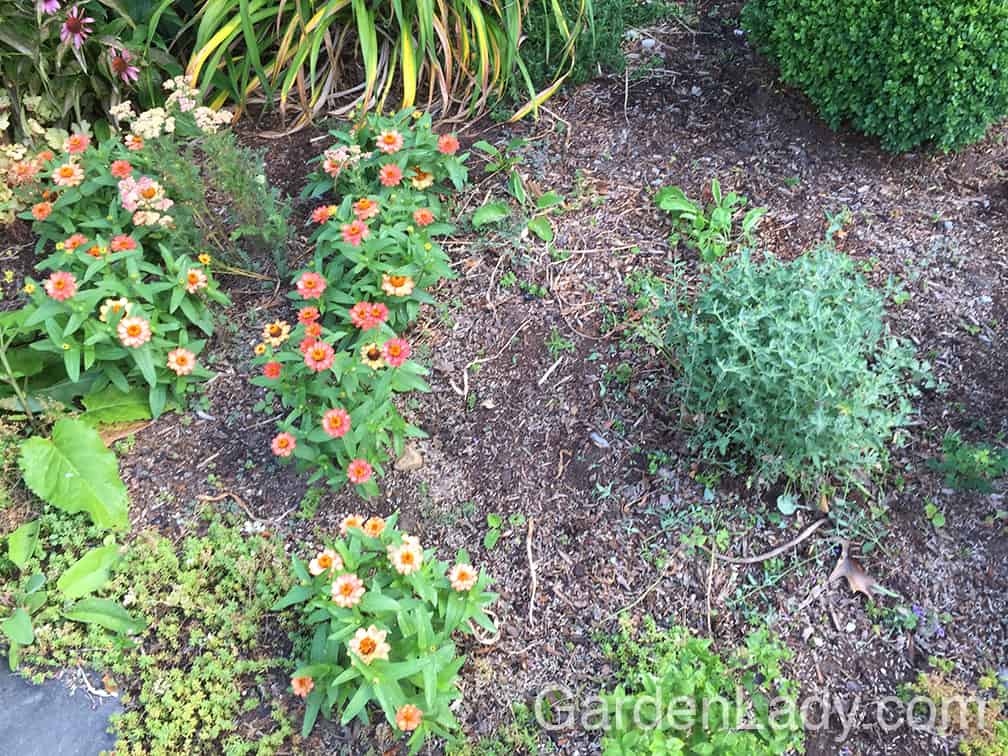
Look at all that valuable real estate where more Profusion Zinnias can be planted!
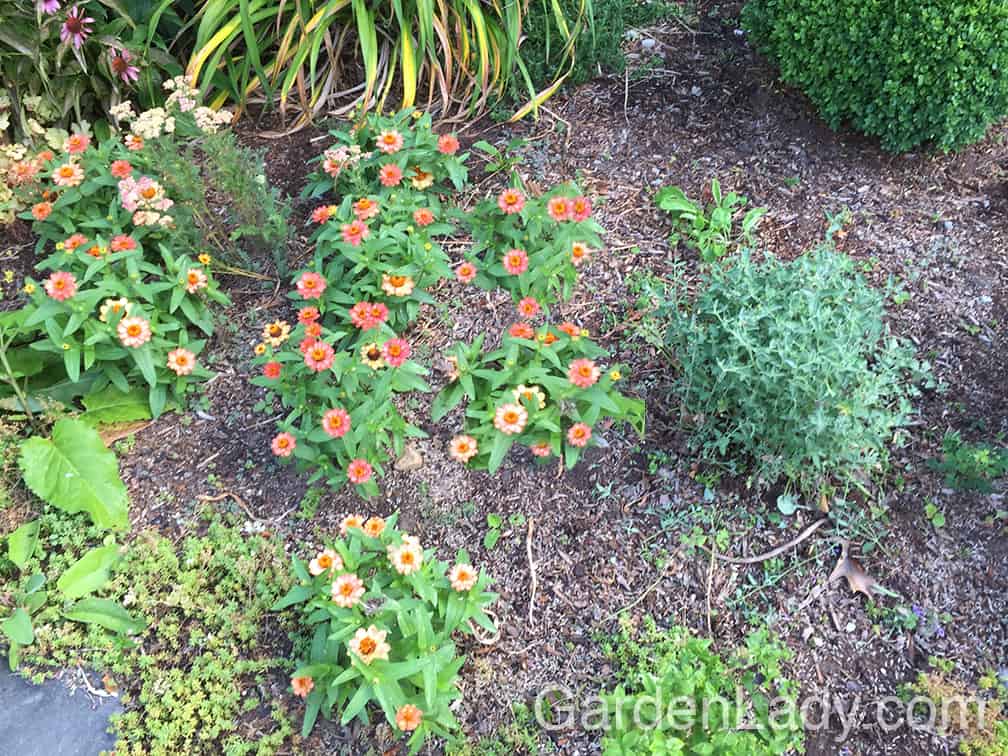
Mission accomplished.
Deadheading can be done in fifteen to twenty minute segments and you can do it on a plant by plant or garden by garden basis. Stroll through the garden with a cup of coffee in the AM or the beverage of your choice in the early evening, and sip a bit here and there. You’ll be amazed at the results.

I really enjoyed this info!!! Thank you
CL you always have a way to enlighten us…in a “you can do it” sort of way! thanks for helping everybody to have beautiful gardens! karen
So informative!,! Thanks for such specific hints…. With pictures.
Great info. Any suggestions for Russian Sage? Mine is flopping over. Also, can you cut day lilies down to the ground? Thanks.
Sharon – Russian sage is a floppy plant naturally which is why it looks best planted in groups of 3, 5 or more…then the floppy character becomes a mass of color, not a flopping plant. That said, it is less floppy when grown in full, dead-on sun. Maybe yours isn’t in enough sun or needs some friends to flop with? Daylilies can be cut to the ground when they start to look tired in late-summer. They will respond with new, fresh leaves.
Thanks for the info.I
Enjoyed reading your words of wisdom, and the pictures were very helpful in showing exactly where to deadhead..
Have deadheaded for years, but not always as aggressively as you have indicated.
Will get out there this week with that CUP OF COFFEE!!!
Thanks again, for helping us all!.
I will continue to forward your info to my gardener-friends..
AND, P.S. Your humor is always appreciated….
Thanks, Jeanne! Your comments and forwards are much appreciated.
Thank you for such great information. I am always walking around my garden with scissors in hand to deadhead everything I can. Just a few minutes and the garden looks new again. Love your blog.
Very good post here. Thanks so much and great photos too.
torenia flower.. when deadflower hangs off…
do you just take flower off….. and seedpod..
will old seedpod.. grow new flower
David,
Torenia is one of those plants that is really improved by deadheading. The seed pods just go on to make seeds, and these will not grow new flowers. But if you take the seed pods off the plant will continue to make new flowers at the end of the new growth on the stems. Since flowering happens on the new stem growth it can be helpful to every week snip three or four stems back by a third to one half of their length. By clipping them gradually you don’t end up with a butchered looking plant but that pruning does double the new growth, and keeps the plant a bit more full. Petunias can be treated in the same way since they too flower on the ends of their growing stems.
thankyou. for indepth reply.. really helpfull.
thank you so much, i learned a lot!
I have a new torenia and don’t know how to tell a bud from a deadhead. Please advise!
Karen – I agree that the Torenia seed pods are hard to tell from the buds but one thing that might help you is that these, like most annuals, produce new flowers at the end of the stems. So if what you see is at or near the tips of the new growth, it’s probably a bud. But if it’s down from the current flowers, lower on the stems, it’s a seed pod. (Deadheading is one reason I’m not too fond of Torenia…)